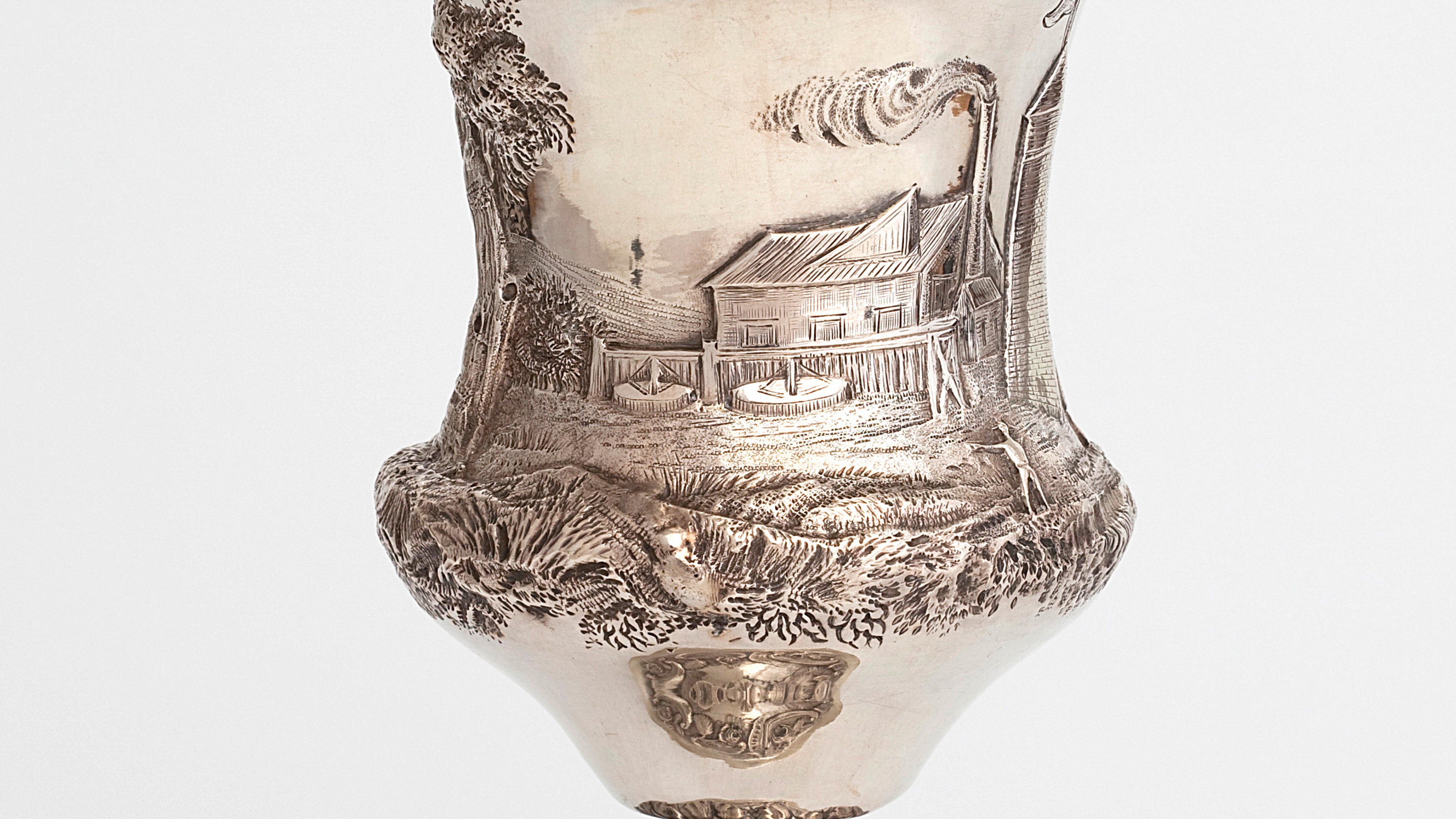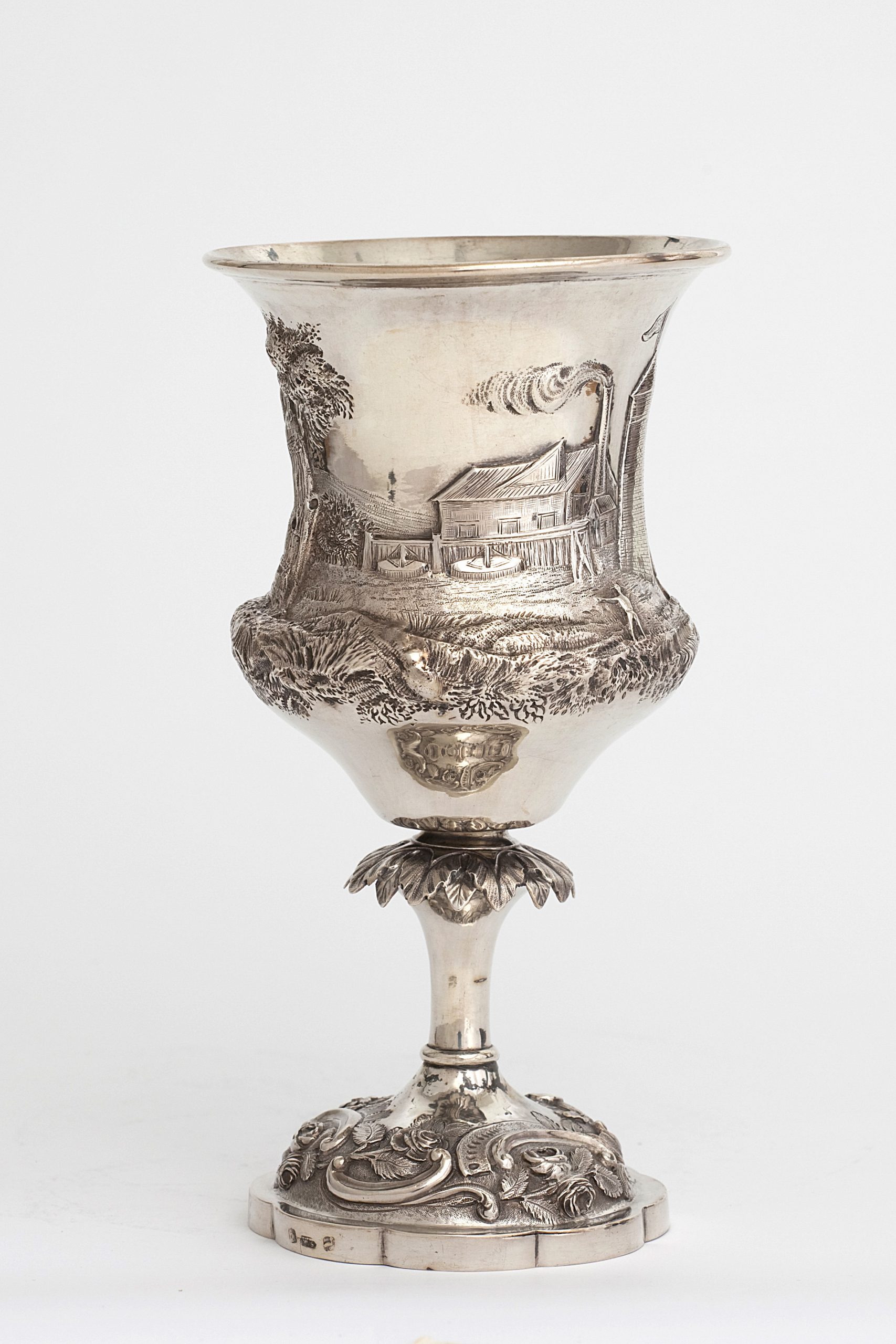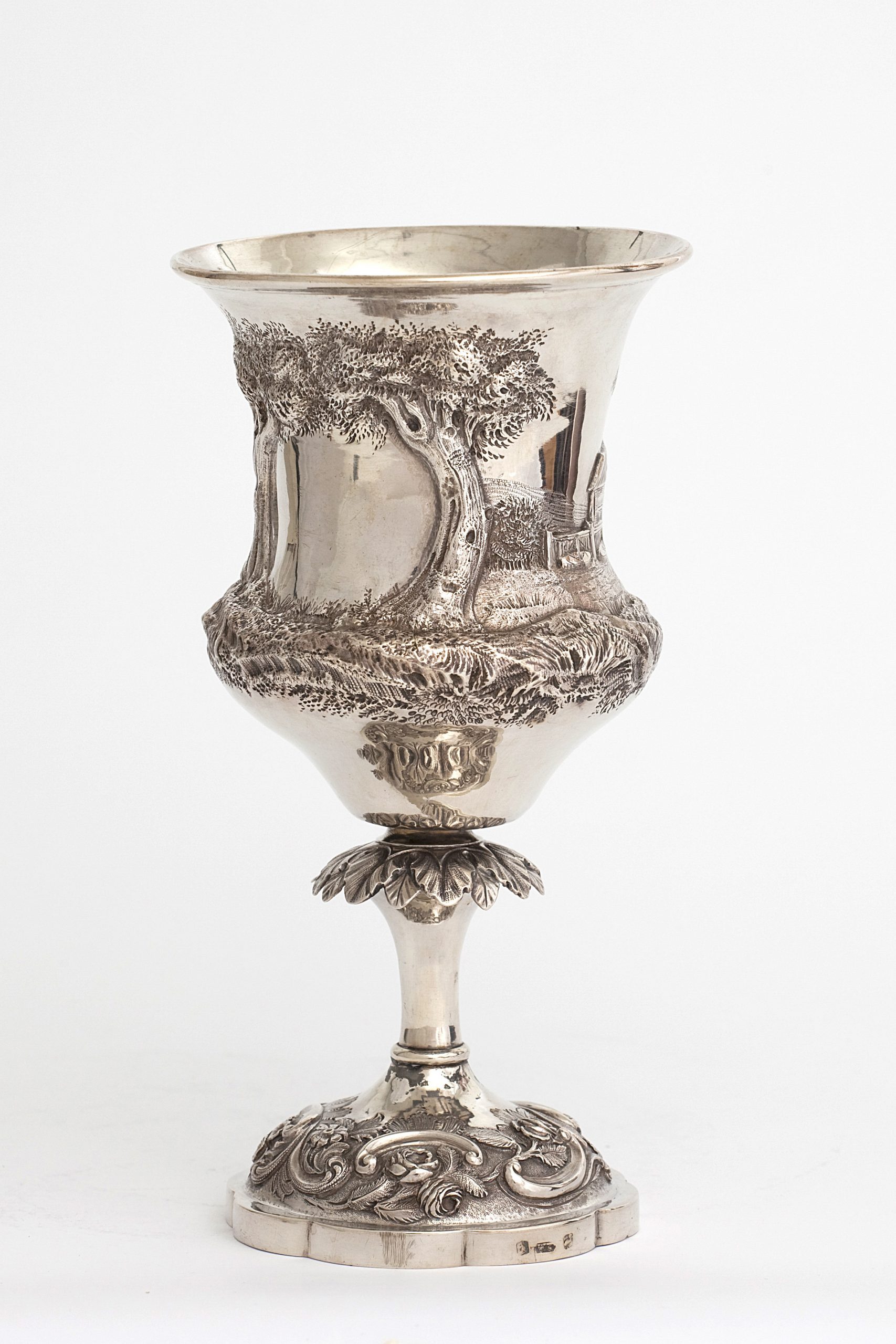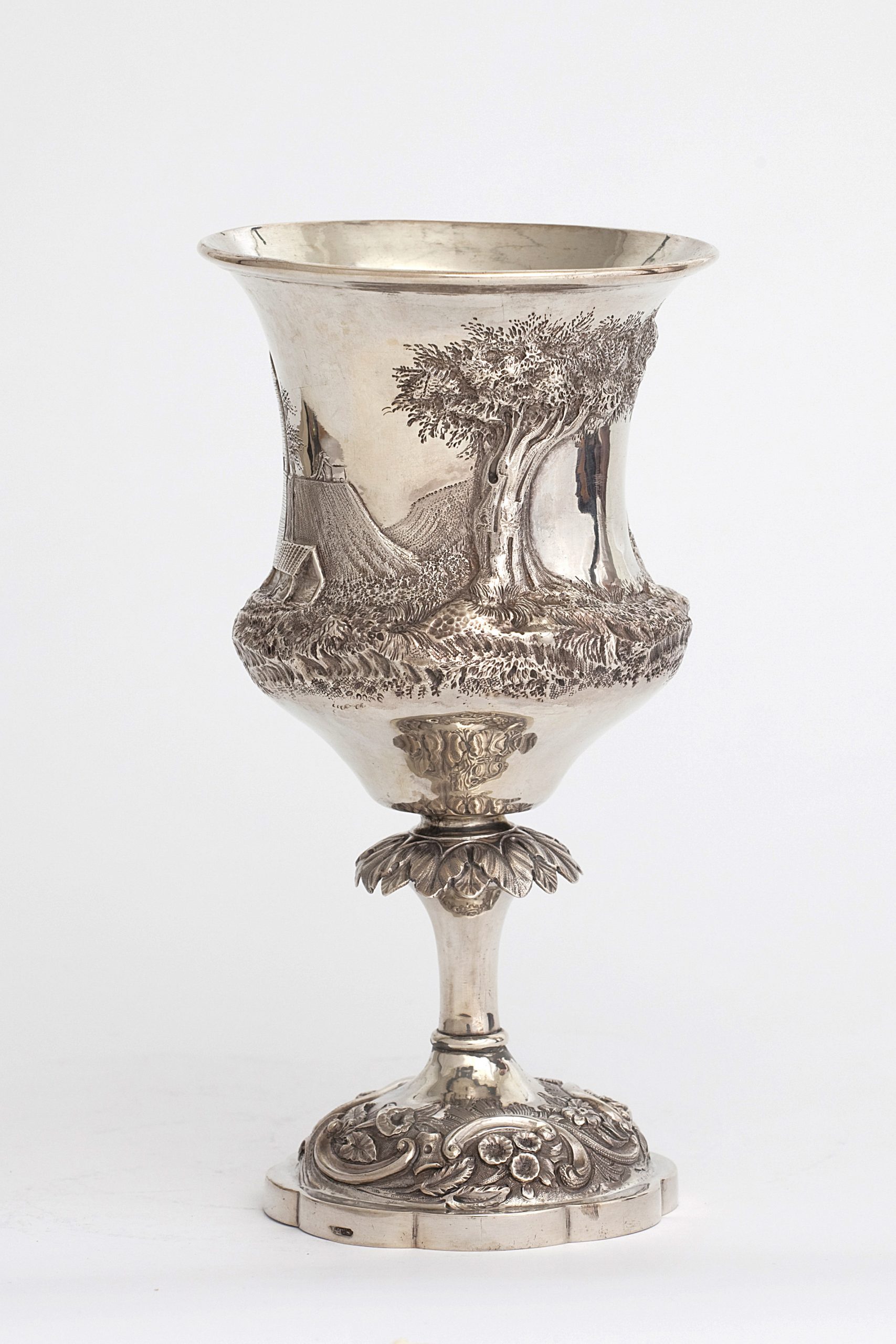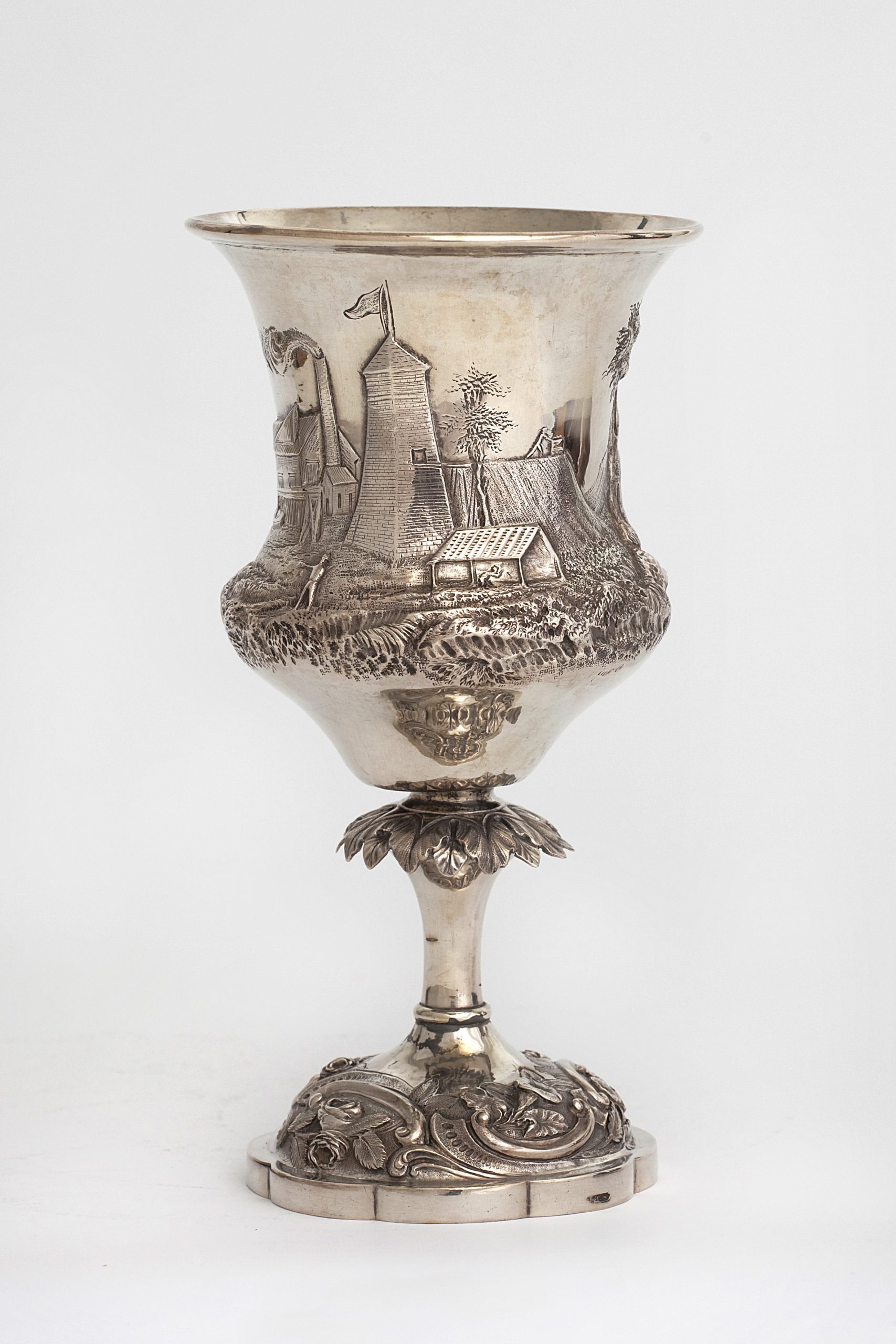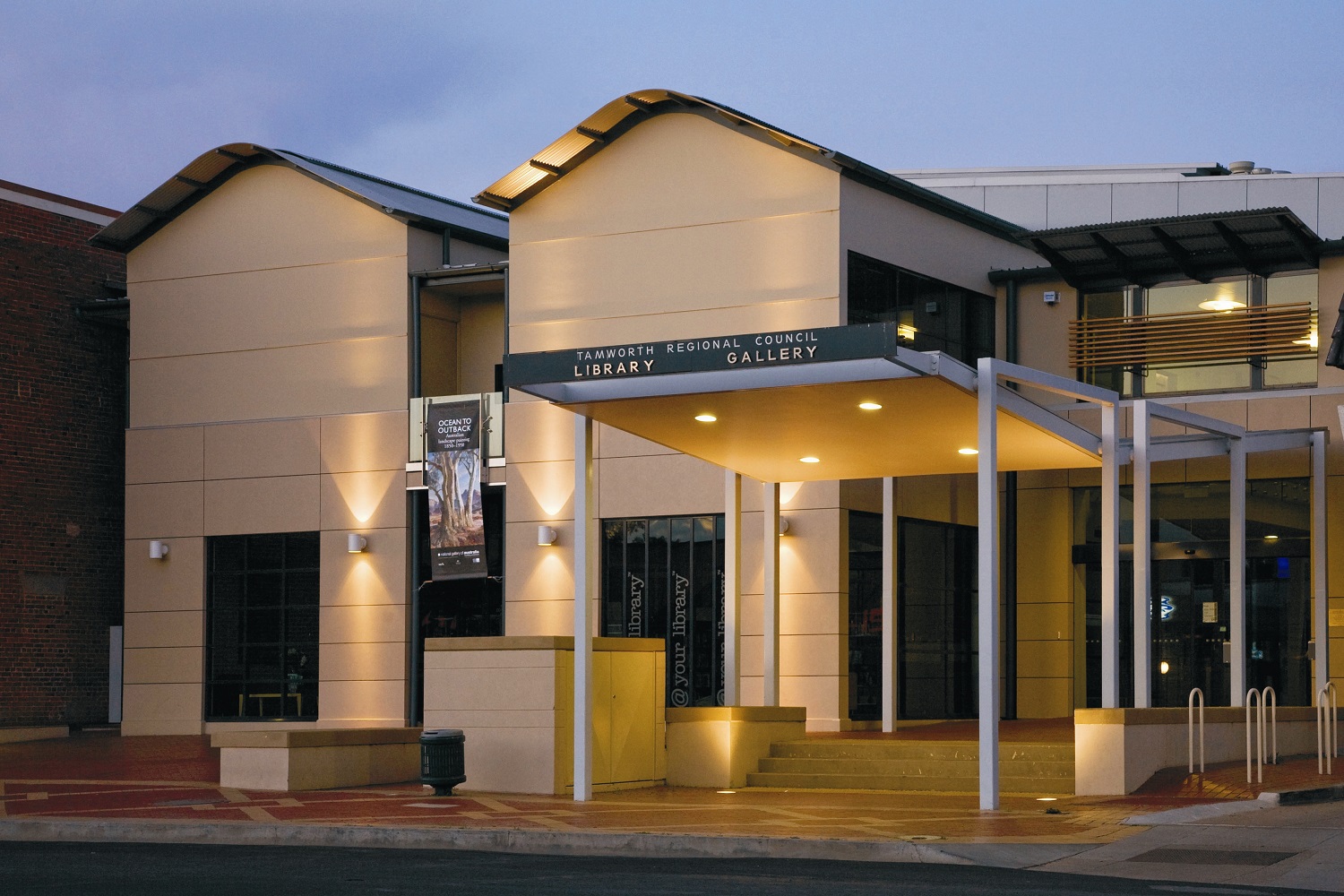An Alchemical Ornament
How Silver is Refined
One step removed from the sweltering heat of the forge, smoke billows from a chimney between towering trees. Small figures are at work around the refinery – surveying, shoving, and squatting. Steep slopes of earth disappear into the distance of a spotless sky.
This sterling silver goblet was made by William Edwards (1819-1899) and retailed by someone with the initials ‘JTS.’ In 1857, Edwards immigrated to Melbourne from London aboard the Blanche Moore in the chief cabin, an arrangement reserved for the more well-to-do or notable. He would go on to be one of Australia’s most prolific silversmiths.
Prior to the discovery of large ore deposits at Broken Hill in 1883, Australian silver was only being produced through the process of smelting zinc and lead. To this day, silver is most commonly found combined with other elements – particularly lead – and so it can be refined through something called the ‘Parkes process’ (patented in 1850).
By adding zinc to liquid lead, the silver migrates into the zinc. From here the zinc separates from the silver and forms a layer which is removed through vaporisation and leaves behind pure silver. Sterling silver is then made by combining pure silver and a small quantity of another element (usually copper) to make the metal harder and less malleable.
This process is carried out at refineries and so there is a certain reverence in Edwards’ design. Ornamental silver celebrating its beginnings.


